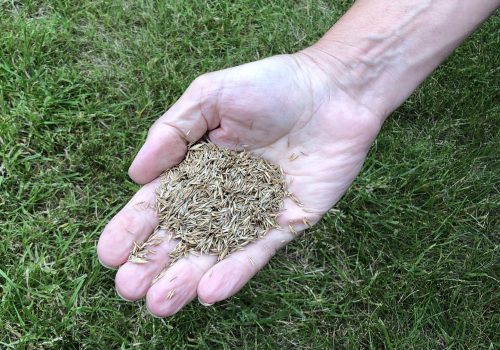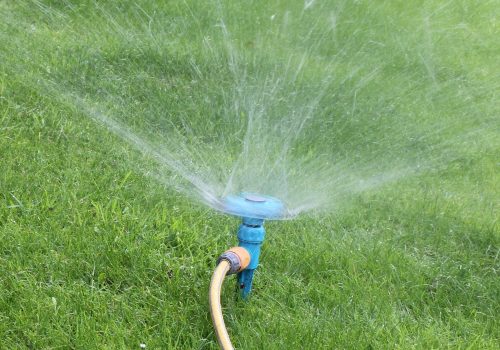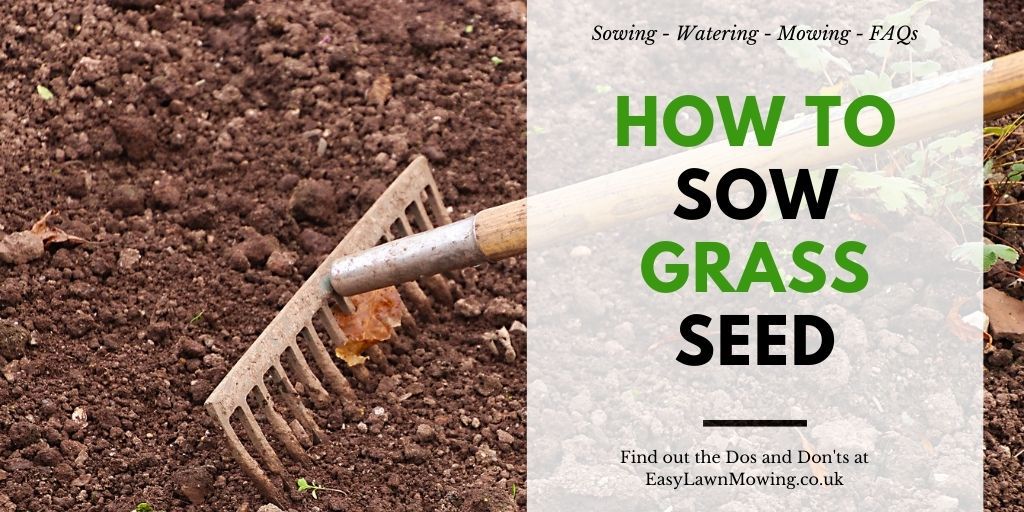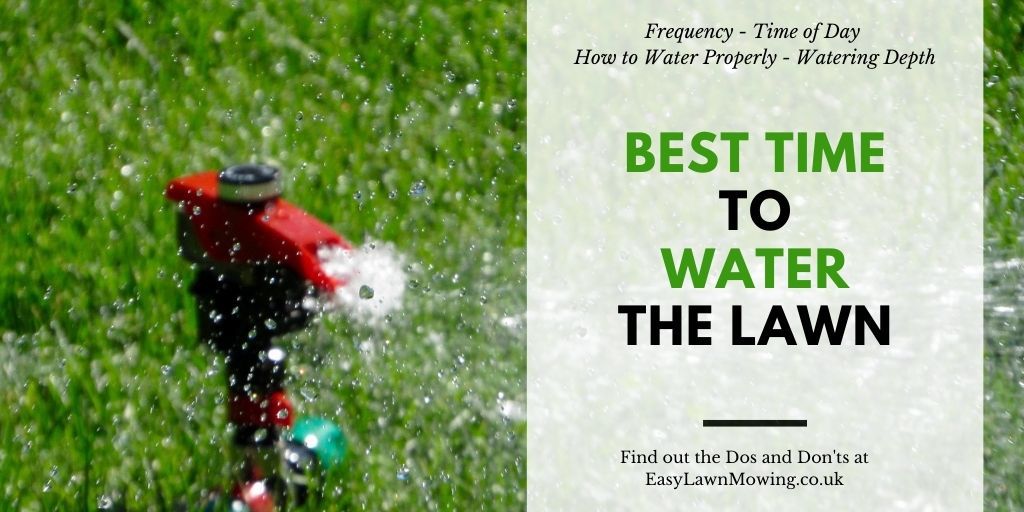If you’re looking to restore your lawn to its former green and healthy glory, then sowing grass seed may be just the solution you need. With a range of effective grass seed options available on the market, it’s now easier than ever to tackle thinning, browning, and untidy looking grass. Whether you’re looking to completely re-seed your lawn or simply enhance an existing one with top-dressing, there are a few important tips to keep in mind to ensure your new grass grows in full and thick without any issues.
In this article How to Sow Grass Seed, I’ll be sharing some of my best tips on how to sow your own grass seed. From preparation to aftercare, I’ll guide you through the process step-by-step so that you can achieve a great looking lawn in no time. So, let’s get started!
Key Takeaways
- Sowing grass seed can help restore thinning, browning, and untidy looking grass in your lawn.
- Effective grass seed options are readily available on the market.
- Following proper preparation and aftercare techniques can help ensure successful growth of your new grass.
Preparation
I start by removing all the weeds in the area where I plan to grow my lawn. This will limit their access to the surface when the lawn is fully grown. I prefer to remove them by hand, but a contact weed killer can also be used. It is important to avoid using a residual weed killer as this will prevent the grass from germinating.
After removing the weeds, I level the surface by treading along the area in different directions and then rake it again in different directions. Once it is level, I apply and rake in 70g per square metre of general-purpose fertiliser.
To ensure an even surface, I remove any debris, stones, sticks, and roots from the area. I also check for any obstacles that may affect the growth of the grass, such as large rocks or roots.
If the soil is sandy, I add topsoil and compost to improve its quality. I also check the pH level of the soil and adjust it if necessary.
Before planting the grass, I use a garden rake to scarify the surface and remove any remaining weeds. I then use bamboo canes to mark out the area and plan where to plant the grass.
If the soil is compacted, I use a tiller to loosen it up and improve its quality. I also add limestone to the soil to improve its pH level.
Finally, I roll the area to create a firm and even surface. This will help the grass to establish its roots and grow evenly. To control weed growth, I use granular fertiliser with a weed control agent.
Sowing

When it comes to sowing grass seed, it’s important to choose the right type of seed for your lawn. The Best Selling Premium Grass Seed is a great option to consider. This seed is a mixture of different grass types, including perennial ryegrass, bentgrass, and coarse grasses. It’s designed to germinate quickly and create a lush, green lawn.
To sow this grass seed, start by raking the surface of the soil to break it up and create a good seed bed. It’s important to ensure good soil contact for the seed to germinate properly. Before you start sowing, set aside some extra seed to use around the edges of the lawn to ensure complete coverage.
To sow the seed, work in parallel lines and apply half the seed across the entire area in one direction. Then, go back and apply the other half in the opposite direction. This ensures even coverage and helps to avoid any bare patches in the lawn.
Once the seed is applied, mix it into the soil by dragging a rake across it. You can also use a rotary or drop spreader to make the job easier. Afterward, flatten the soil using a light roller or lawn mower roller, going in two different directions.
To help the soil hold moisture, work in some organic matter. It’s important to use well-rotted organic matter to ensure the soil surface doesn’t sink unevenly as it decays.
See what the Royal Horticultural Society have to say on Starting a lawn from seed.
Best Selling Premium Grass Seed
Last update on 2024-04-15 / Affiliate links / Images from Amazon Product Advertising API
Aftercare
Watering

Mowing
Once the grass is visibly growing, which usually happens around two or three days after the first two weeks, it is time to start mowing. Initially, you should remove about one-third of the length of the grass. If you have sowed the seed during autumn, you do not need to worry about mowing again until the next spring. However, if you have sowed during the spring, you should gradually reduce the height of the grass until you have reached the desired level.
Usage
To ensure the best results, it is recommended to limit heavy use of the lawn during the first season. You should be a little careful for the first 6 months to prevent wear and tear on the grass. Additionally, it is important to avoid mowing the lawn during hot weather or drought conditions, as this can damage the grass. Finally, it is important to collect the clippings after mowing to prevent moisture buildup, which can lead to rot and other problems.
That’s it for the aftercare section.
Common Lawn Seed FAQs
Whilst seeding your lawn successfully may seem like a relatively easy task at first glance, there is a lot more to this than you might think so in addition to understanding the sowing and maintenance process, I have also included the answers to some common lawn seed FAQs.
Is Lawn Seed Safe For Pets?
Grass seed is not toxic to pets, but it can cause pain and infection if it gets lodged in their skin. To avoid this, it’s best to keep your pets off the lawn during the early stages of the seeding process. If you have pets, you may want to consider lawn strengthening, treatment, and repair to ensure a healthy and safe lawn.
When Should I Plant Lawn Seed?
In the UK, the best time to plant lawn seed is in the late summer through to mid-autumn. This is when the soil is still warm and moist, which helps the seed germinate quickly. Planting in the spring is also an option, but it may require more maintenance.
How Long Will Lawn Seed Last?
Lawn seed can last up to 2 years if stored properly. If you don’t use all of the seed in the box, make sure to store it in a cool, dry place. This will ensure that it stays fresh and viable for future use.
Will Birds Eat My Lawn Seed?
Birds are known to eat lawn seed, but most suppliers coat their products with bird-repellent to prevent this. While this works in most cases, some birds may still find a way to get to the seed. To prevent this, you can cover the seeded area with a mesh or netting until the seed has germinated.
Overall, planting lawn seed can be a cost-effective way to achieve a lush and healthy lawn. By following these tips and taking proper care of your lawn, you can enjoy a beautiful outdoor space all year round.
How to Sow Grass Seed Video
Conclusion
Before sowing the grass seed, it is important to prepare the soil properly. Here are the steps to follow:
- Remove any weeds and debris from the area where you plan to sow the grass seed.
- Loosen the soil with a garden fork or a tiller to a depth of at least 15cm.
- Rake the soil to create a smooth surface.
Once the soil is prepared, you can start sowing the grass seed. Here are the steps to follow:
- Calculate the amount of grass seed you need based on the size of the area you plan to sow.
- Divide the seed into two equal portions.
- Sow the first portion of the seed in one direction and the second portion in the opposite direction to ensure even coverage.
- Rake the soil lightly to cover the seed.
After sowing the grass seed, it is important to water the area regularly. Keep the soil moist but not waterlogged. Within a few weeks, you should see the grass start to grow.
Remember to follow these steps carefully to ensure the best results. With a little patience and care, you can have a beautiful lawn in no time.
If you found this post interesting then maybe you’d like to see some of my other garden related articles and tools to help you get the job done, visit easylawnmowing.co.uk
As a seasoned expert in the field of garden power tools, I have dedicated over a decade to working with and reviewing a wide variety of lawn mowers. My extensive experience has allowed me to gain a deep understanding of the benefits and limitations of different types of mowers and garden tools.
Over the years, I have honed my skills in writing informative articles and creating helpful videos for various blogs and publications. This has given me the ability to not only recognise what makes a good lawn mower, but also to help you choose the perfect garden tool for your specific needs and requirements.
With my wealth of knowledge and expertise, I am confident that I can provide you with valuable insights and recommendations when it comes to selecting the right lawn mower for your lawn. So, whether you're looking for a battery cordless, electric, petrol, or robotic mower, you can trust in my expertise to guide you towards the best option for your garden.














I have always tried to keep a neat lawn but I must confess that I am not really very good at it. The tips you have given here will help me very much.
Is it good to use a weed and feed product knowing that I have more weeds than grass? If so, how long should I wait to reseed after the weeds are dead?
I very much like the watering schedule you put forth, I never know how much to water newly seeded areas or the regular established lawn for that matter.
I never cut my grass as short as most of my neighbors and mine seems to usually be greener than the rest. Is this also a good idea?
I would give the weed and feed time to kill off all the weeds and then start putting down the seeds, just remember to follow the process above and you’ll be totally fine.
And if leaving your grass a little longer seems to be working then just keep it up!
I used to own a lawn care business that went from profitable to bankrupt. It’s amazing how doing yourself is so much cheaper than paying someone else to do it for you. I thought about growing a lawn my backyard until I realized that I would have to mow it, go figure right. Well, thank you for this very detailed guide on growing a lawn.
I’m sorry to hear about that Nathan.
Yeah it may take a little more work but over the long term it’s totally worth it. I’m glad you enjoyed the post and thanks for leaving the comment ;-)